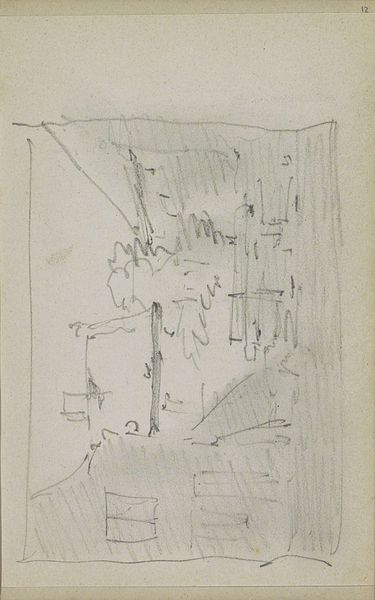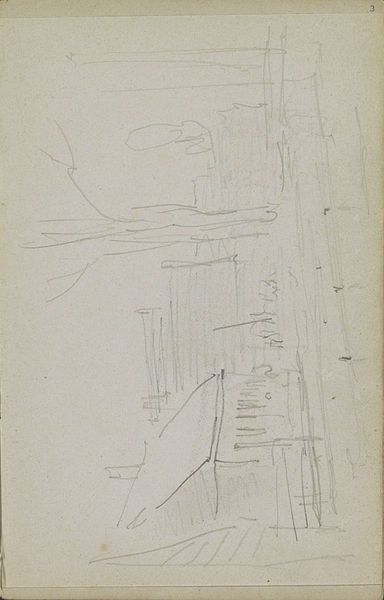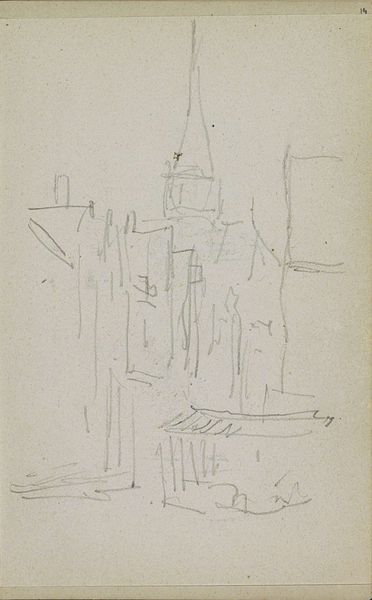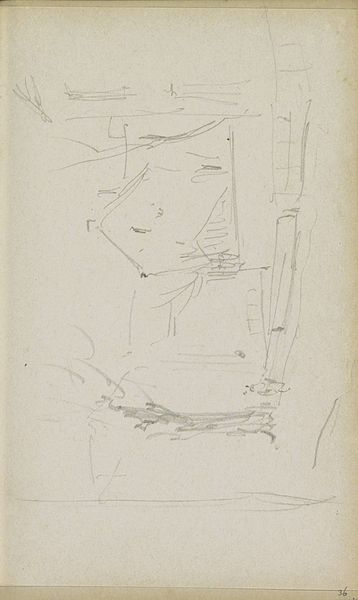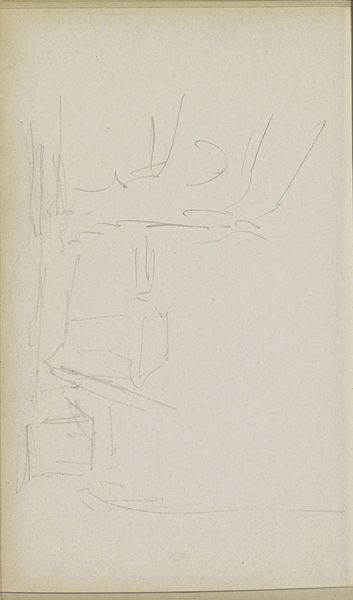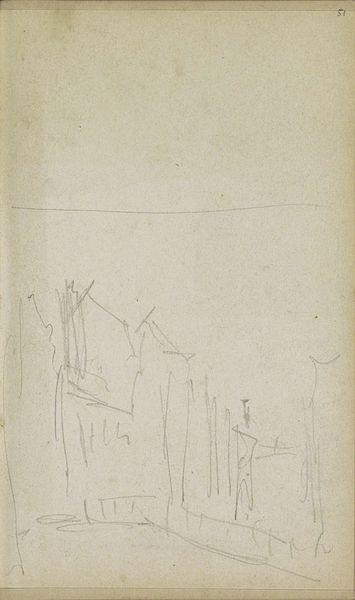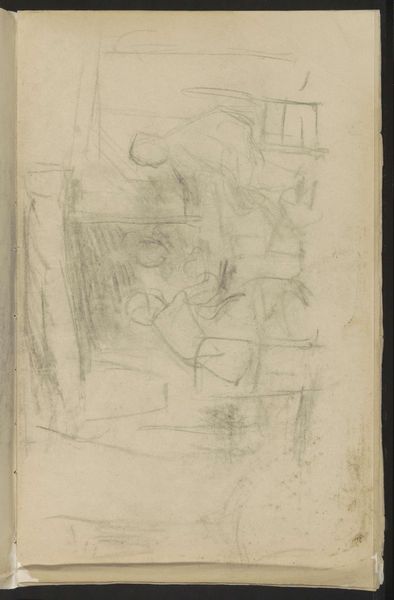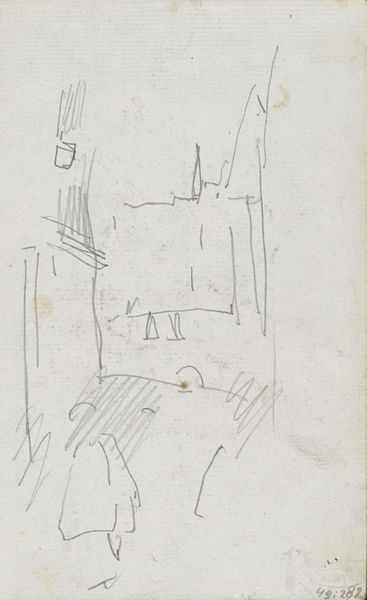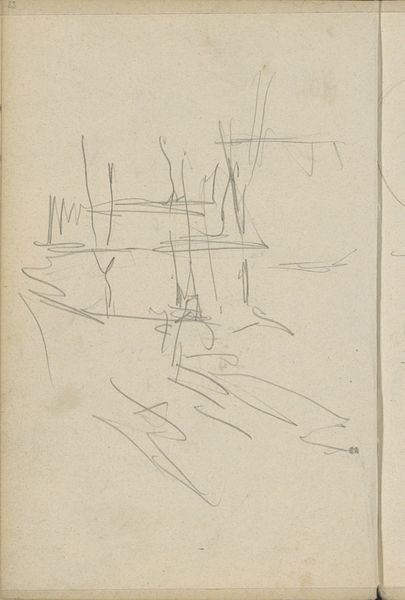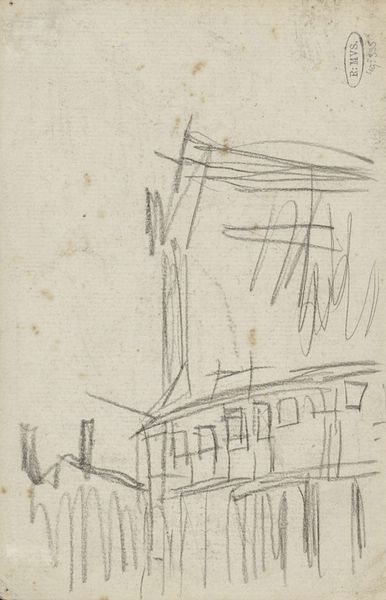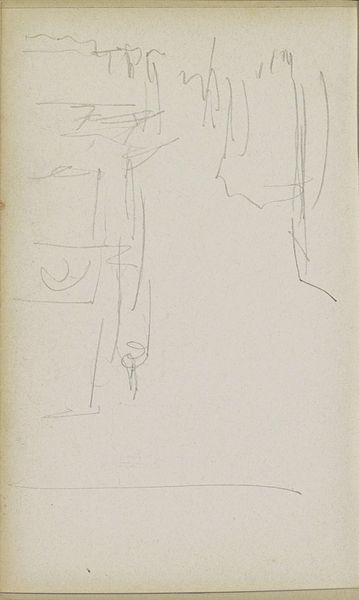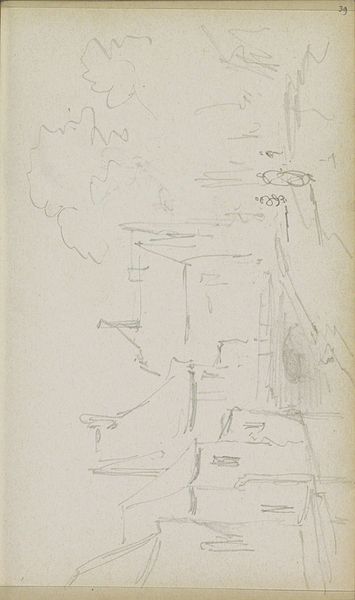
drawing, pencil
drawing
amateur sketch
toned paper
light pencil work
dutch-golden-age
sketch book
landscape
personal sketchbook
idea generation sketch
sketchwork
ink drawing experimentation
pencil
sketchbook drawing
cityscape
sketchbook art
street
realism
Copyright: Rijks Museum: Open Domain
Editor: So, this sketch is titled "Gezicht op een straat, mogelijk in Delft," or "View of a street, possibly in Delft," by Adrianus Eversen. It's a pencil drawing, dating somewhere between 1828 and 1897. It feels like a very fleeting glimpse of daily life; almost like a memory. What do you make of it? Curator: Well, considering the socio-political context of 19th-century Dutch art, particularly its relationship with the Golden Age, this work offers an interesting insight. It’s a cityscape sketch, perhaps a study. But beyond its immediate representation, think about the emerging role of the artist in this period. Was Eversen simply documenting, or was he participating in shaping the visual identity of Dutch urban life? Editor: That's a really interesting point. The "possibly in Delft" aspect suggests it could be anywhere, and yet the quick strokes imply a real, specific place he felt compelled to capture. It’s almost democratic in its subject matter. Curator: Precisely. The sketch’s informality pushes back against the grand history paintings of the era, signaling a shift towards representing everyday life, what we might term 'street photography' in its infancy, albeit done by hand. This kind of art allowed for a broader engagement with visual culture beyond the elites. Editor: It makes me wonder about the intended audience. Was this intended for public consumption or merely private musings in a sketchbook? Curator: That's key. If it was for public viewing, how might it influence ideas about national identity, contrasting perhaps with the romanticized rural landscapes which were also popular at the time? Also, let's consider where the drawing was displayed, if at all. Did this art affect the Dutch society outside of the city center? Was Eversen simply hoping for it to get into museums? Editor: It brings another perspective to urban representation in art and reminds me that even seemingly simple sketches hold cultural and social weight. It pushes us to view our surrounding history outside of classrooms, or big, heroic settings. Curator: Exactly, looking at art in a historic perspective has really enriched my view of street art, its significance, and how different cultural settings form its message and overall appeal.
Comments
No comments
Be the first to comment and join the conversation on the ultimate creative platform.
